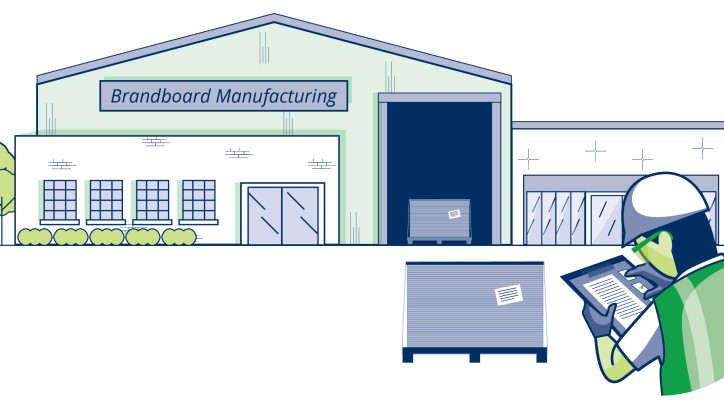Step-by-step guide for plasterboard product substitution
Last updated: 29 July 2022

Global supply-chain challenges and peak demand mean Aotearoa New Zealand is currently experiencing a shortage of plasterboard products.
Plasterboard substitution - step by step guide
Download a print version of the step-by-step guide
The step-by-step guide shows how the product substitution process would work for 'Brandboard' - our invented plasterboard manufacturer.
The Manufacturer
1. Brandboard is a new manufacturer of plasterboard that has just set up a plant in Aotearoa New Zealand.
2. Brandboard has ensured that their product, if installed in accordance with their technical data, complies with the relevant provisions of the Building Code.
3. A designer is completing the design of a house with input from the owner and they are at the stage of specifying the building products and materials.
4. The designer chooses Brandboard plasterboard for the wall and ceiling lining of the house and checks the company's technical data to ensure that the building work will comply with the Building Code.
The Designer
5. The designer is aware of the current supply chain issues, so considers before submitting the application for building consent, whether there are issues with the supply of Brandboard products.
6. The designer is also aware of two other comparable plasterboard products that could be substituted in the event that there are any issues with supply.
The Building Consent Officer
7. The building consent officer receives the application for building consent that specifies Brandboard. There is adequate information that the building work will comply with the Building Code.
8. The building consent is granted and issued.
The Builder
9. The builder, during construction, finds that Brandboard plasterboard is not available, but another product selected by the designer is available.
Minor Variation Process
10. During an inspection the building inspector discusses the proposed product substitution with the builder. It is agreed that the Brandboard standard wall lining can be substituted with the alternative plasterboard. The inspector makes a note of the substitution on the inspection record.
11. They also discuss the proposed substitution for the plasterboard that is part of the bracing system. In this case, the inspector cannot make the decision on site as the supporting technical information requires further review and that a minor variation or an amendment to the building consent is required.
12. The designer calls the building consent officer at the council and discusses whether this change can be accepted as a minor variation or if an application for an amendment to the building consent is required.
13. The building consent officer agrees that if adequate information is provided, and that the change does not deviate significantly from the original, then a minor variation is appropriate.
14. The designer, with agreement with the owner, applies for a minor variation and submits the revised plans and supporting information.
15. The building consent officer reviews and approves the minor variation and records the change.